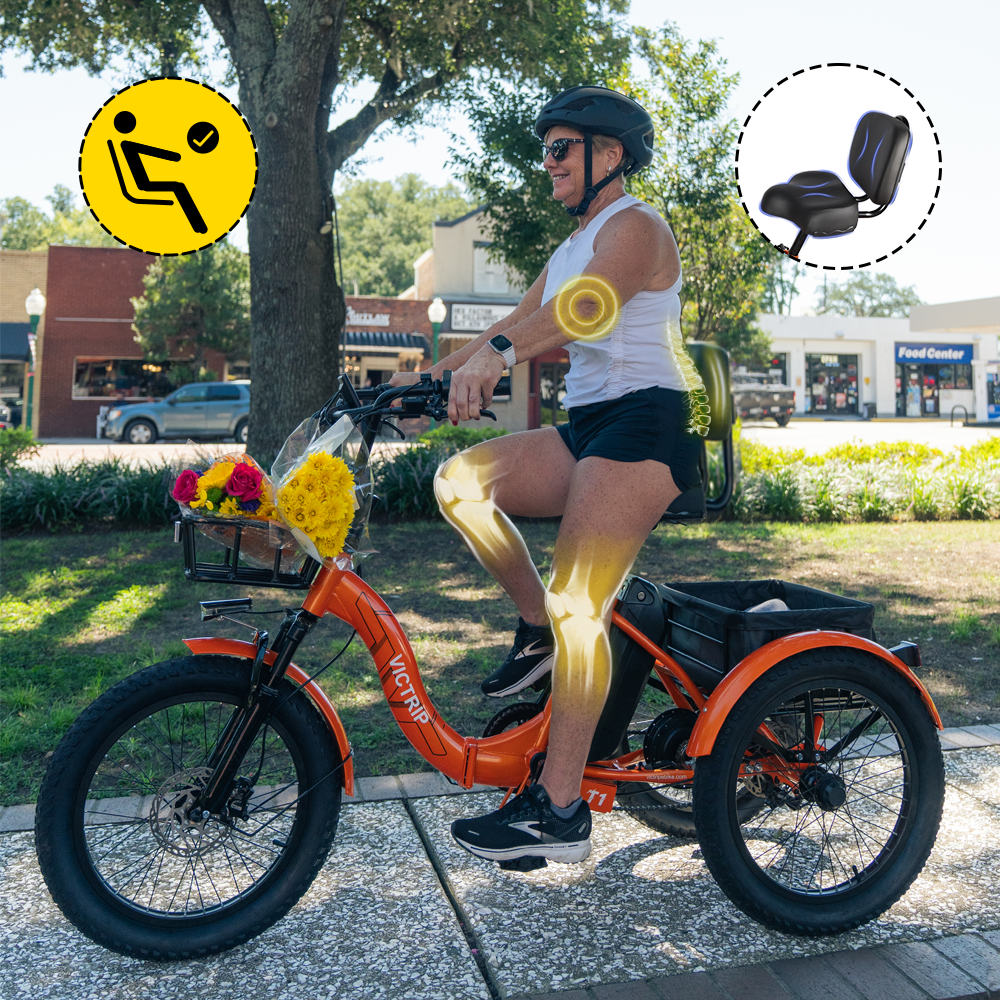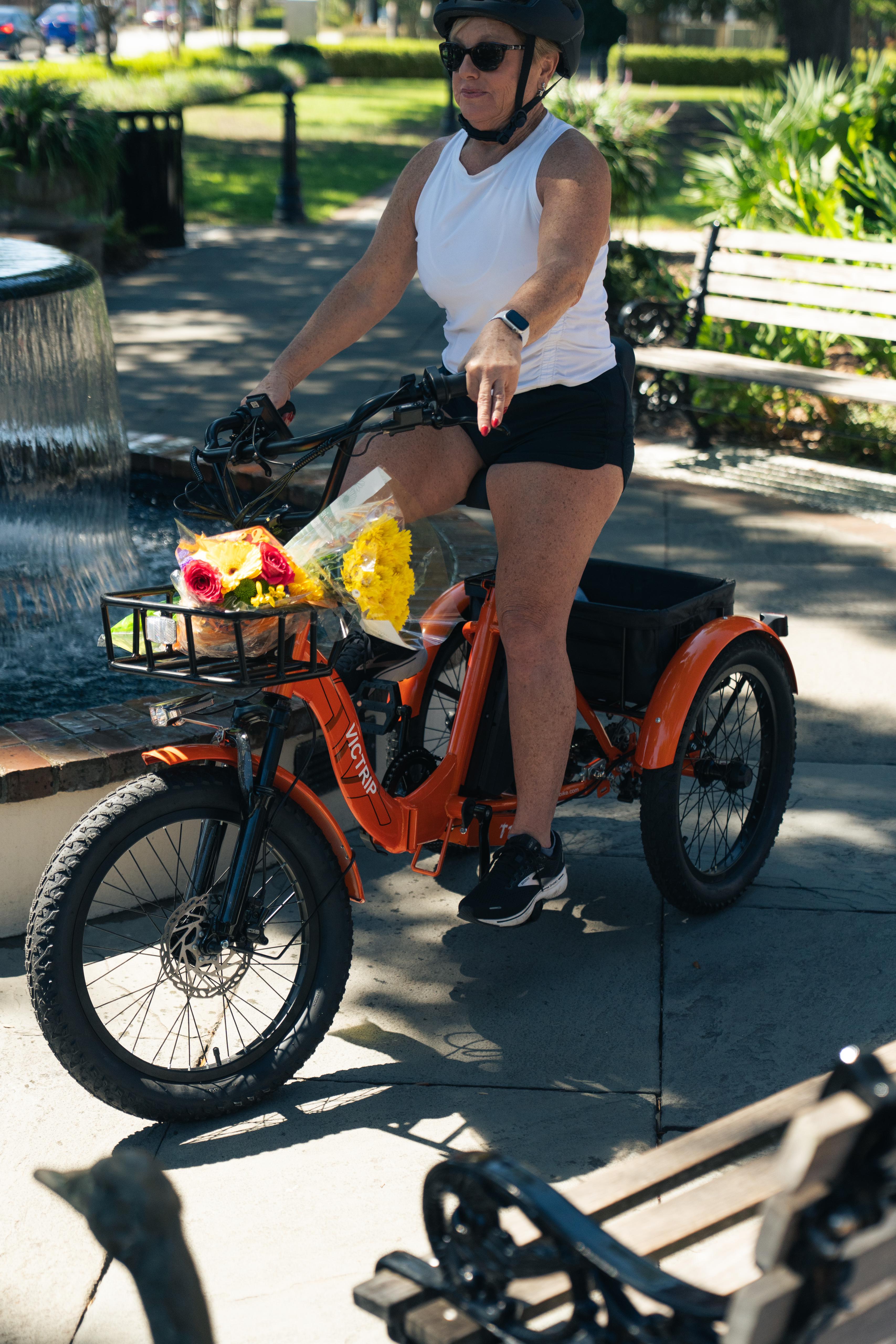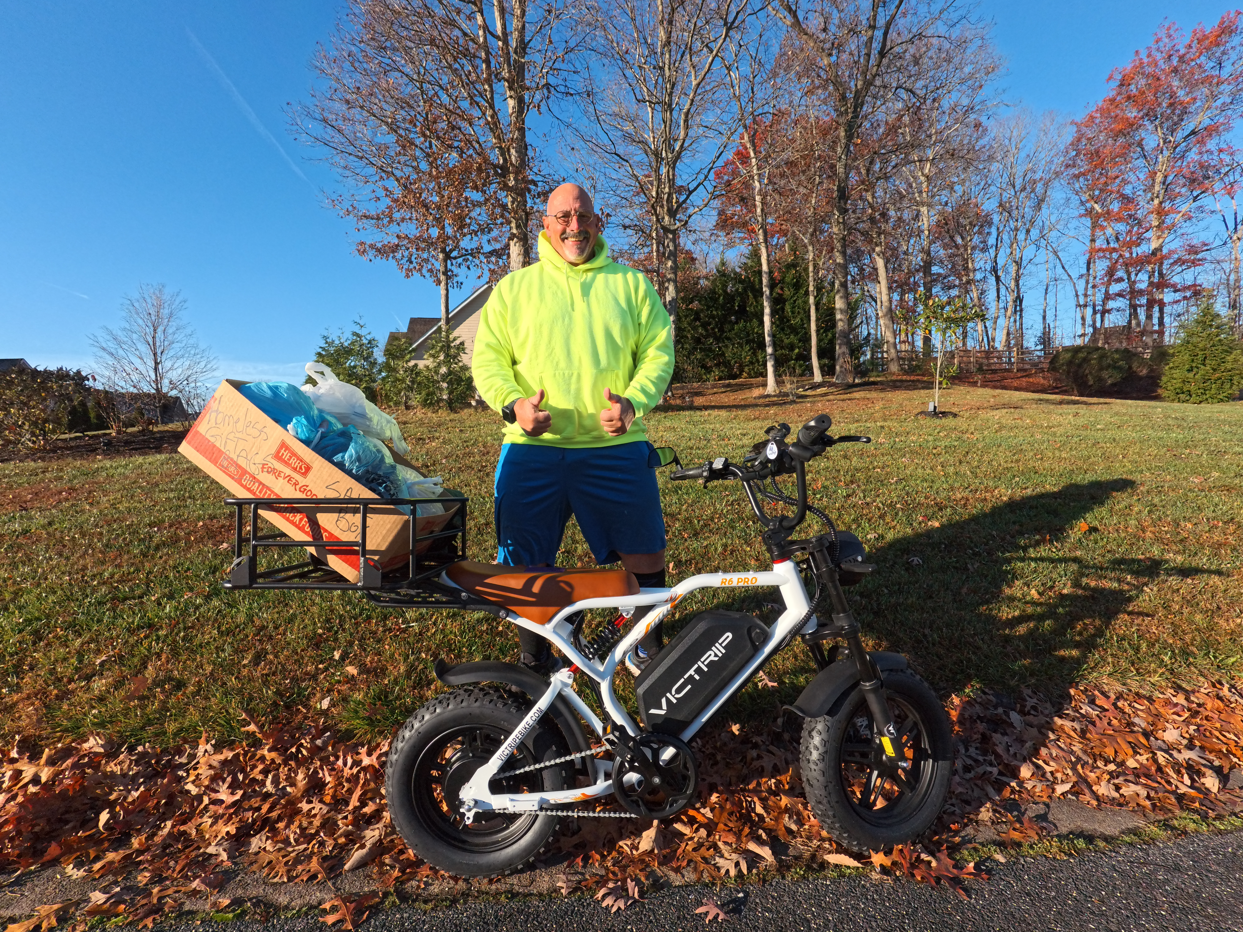
If you're tired of your eBike capping out at 15-20 mph and you're ready to unleash some serious speed, you're not alone. eBike upgrades are the secret sauce to turning your average commuter into a street demon. Let’s dive deep into exactly how you can upgrade your eBike to go super fast without frying your system—or your face.
Understanding Your eBike's Basics
What Determines Your eBike’s Speed?
Your speed depends on four major factors:
-
Motor power (Watts)
-
Battery voltage (Volts)
-
Controller limits (Amps)
-
Weight and aerodynamics
Legal Speed Limits and Regulations
Before anything else, know your local laws. In the U.S., Class 1 and Class 2 eBikes are usually capped at 20 mph, while Class 3 goes up to 28 mph. Anything beyond that enters moped territory and may need registration.
The Power of the Motor and Its Limitations
Most stock eBikes come with a 250W–750W motor. If you’re serious about hitting 35+ mph, you'll eventually need a motor that can handle 1000W or more.
The First Step – Unlock the Speed Limiter
What is a Speed Limiter?
It’s a firmware-locked barrier that restricts your eBike’s speed electronically.
How to Bypass It Safely
LCD Controller Settings
Many eBikes allow you to enter a secret menu using a button combo. Increase the top speed setting from 25 km/h to 50 km/h (or more).
DIY Wiring Hacks
Some models use a speed sensor hack where you trick the bike into thinking it’s moving slower than it actually is.
Manufacturer Firmware Unlock
Some brands offer official unlocks—either paid or via software updates.
Upgrading the Battery for Higher Voltage
Voltage vs Current vs Power
The power your motor receives is calculated as:
Power (Watts) = Voltage (V) × Current (A)
So, if you move from:
-
36V 10A (360W) to
-
48V 20A (960W)
You’re almost tripling the power output—hence, a major speed increase.
Battery Chemistry Options
Most eBikes use:
-
Li-Ion (Lithium-Ion): Long lifespan, moderate discharge rate.
-
LiFePO4 (Lithium Iron Phosphate): Safer, but bulkier.
-
LG/Samsung Cells: Premium-grade cells with better thermal control.
VICTRIP electric bike uses high-quality LG battery cells in their eBikes to ensure reliable performance, enhanced thermal safety, and extended battery life.
Always check:
-
Discharge rate (C rating)
-
Built-in BMS (Battery Management System) – A good BMS prevents overcharging, overheating, and cell imbalance.
Battery Upgrade Safety Tips
-
Use XT60, XT90, or Anderson connectors for high current.
-
Secure battery with straps or frame brackets.
-
Never overcharge – always use a matched charger.
Motor Upgrade – Going Beyond 1000W
Mid-Drive vs Hub Motor (Performance Benchmark)
| Feature | Mid-Drive (e.g., Bafang BBSHD) | Hub Motor (e.g., QS Motor) |
|---|---|---|
| Torque | High | Moderate |
| Hill Climbing | Excellent | Average |
| Max Speed | 30–45 mph | 35–65+ mph |
| Complexity to Install | Medium | Low |
| Cost | $$$ | $$ |
Pro tip: High-performance hub motors (3000W–5000W) like QS or MXUS require:
-
72V battery
-
Heavy-duty controller
-
Reinforced frame and torque arms
Controller Mods – Tune Like a Pro
Key Specs to Compare:
-
Voltage Support Range (e.g., 36V–72V)
-
Current Output (e.g., 25A, 40A, 60A)
-
MOSFET Quality – Determines thermal efficiency
-
Programmable Settings – Use software like BafangConfigTool or Grin Tech Cycle Analyst
Field-Oriented Control (FOC) vs Sinewave Controllers
-
FOC: Smarter torque and smoother response
-
Sinewave: Quieter and more efficient, ideal for stealth
Custom Wiring and Heat Management
Wiring Best Practices
-
Always solder high-current joints.
-
Use heat shrink tubing on all exposed terminals.
-
Use 12 AWG or thicker for battery/motor connections.
Add a Heat Sink or Thermal Paste
-
Stick-on heat sinks for your controller’s FETs.
-
Thermal paste can be applied between motor casing and heat fins.
Install a Temperature Sensor
-
Use NTC thermistors inside the motor windings.
-
Connect to your controller to trigger thermal cut-off above 80–100°C (176–212°F).
Custom Tires for High-Speed Riding
| Tire Type | Feature | Speed Impact |
|---|---|---|
| Slick Tires | Low rolling resistance | ★★★★★ |
| Knobby Fat Tires | More grip, less speed | ★★☆☆☆ |
| Hybrid Tread | Balance of grip/speed | ★★★★☆ |
Go for puncture-resistant liners, and increase pressure to 80–100 PSI (as per sidewall rating).
Software/Firmware Mods
For foldable eBikes with smart controllers or displays:
-
Use open-source firmware on Bafang, Tongsheng, or VESC-compatible systems.
-
Some allow:
-
Throttle curve editing
-
Assist level custom tuning
-
Overcurrent protection disabling
-
Tools: VESC Tool, OpenSourceEBike, ST-Link + PC
Boosting Performance with a Better Motor
Types of eBike Motors
-
Hub Motors (rear/front): Simpler and cheaper.
-
Mid-Drive Motors: More torque, better for hill climbs and high speeds.
Swapping to a More Powerful Motor
Upgrade to a 1000W, 1500W, or even a 3000W hub or mid-drive system if you're chasing serious speed.
Rear Hub vs Mid-Drive Performance Gains
Mid-drive wins on torque and efficiency. Rear hub motors are easier for raw speed hacks.
Controller Upgrade for Speed Freaks
What a Controller Does
It regulates how much power is sent to your motor. No matter how big your battery is, the controller decides how much juice flows.
Matching Controllers with Motors and Batteries
Use a controller that supports higher amperage (30A–50A) and is compatible with your motor’s wattage.
Amp Output and Firmware Tuning
Custom firmware can allow fine-tuning throttle response, power curves, and regen braking strength.
Reduce Drag and Rolling Resistance
Use High-Pressure Tires
Lower rolling resistance = faster speed. Inflate to the max PSI your tires allow.
Swap for Lightweight Wheels
Less rotating mass improves acceleration and top-end speed.
Streamline Your Riding Position
Tuck in those elbows and lean forward. A more aerodynamic posture makes a surprising difference.
Upgrade the Drivetrain and Gearing
Install a Larger Front Chainring
This increases gear ratio, allowing higher speeds at lower pedaling cadence.
Fine-Tune Gear Ratios for Higher Top Speeds
Pair your chainring upgrade with smaller rear cogs to maximize efficiency.
Improve Electrical Wiring for Efficiency
Use Thicker Gauge Wires
Thin wires can choke your power. Use AWG 12 or lower for high-current systems.
Shorten Cable Lengths
Shorter wires = less resistance = more usable power.

Advanced Upgrades for Hardcore Riders
Dual Motor Setup
Double the torque and speed—but also double the battery drain and weight.
Regen Braking as Power Booster
Some advanced controllers offer regenerative braking. It recovers some energy during braking, though it won’t majorly affect speed.
Safety Considerations at Higher Speeds
Brake System Upgrades
Hydraulic disc brakes are a must above 30 mph. Mechanical brakes simply won't cut it.
Helmet and Protective Gear
Always wear full-face helmets and gloves. Speed equals risk.
Lighting and Reflectors
Be seen. High-speed eBikes need motorcycle-grade lights.
Common Mistakes to Avoid
Overheating Your Components
Going faster means more heat. Watch your motor and controller temps.
Ignoring Weight Distribution
Top-heavy or rear-heavy setups become unstable at speed.
Using Mismatched Parts
Your motor, controller, and battery must be in sync to avoid performance loss or even explosions.
Cost Breakdown of Each Upgrade
| Upgrade | Estimated Cost |
|---|---|
| Speed Limiter Unlock | $0–$50 |
| Higher Voltage Battery | $300–$800 |
| New Motor (1000W+) | $200–$600 |
| Controller Upgrade | $100–$300 |
| Tires and Wheels | $50–$150 |
| Gear System Mods | $40–$100 |
Realistic Speed Gains You Can Expect
-
Stock 250W: ~20 mph
-
48V, 750W Setup: ~28 mph
-
52V, 1000W Setup: ~35 mph
-
72V, 2000W Beast: 45–60+ mph (Not legal for street use in many areas)
Legal Risks and Insurance Issues
Upgrading beyond legal specs may:
-
Void your warranty
-
Get you fined
-
Require registration and insurance
-
Make you liable in case of accidents
Final Tips for Getting the Most Out of Your Upgraded eBike
-
Always upgrade incrementally—don’t throw everything on at once.
-
Monitor battery temps during your first few rides.
-
Use apps like eBike Analyzer to track performance data.
Conclusion
Upgrading your eBike to go super fast is part science, part rebellion, and all about understanding your machine. If you're willing to dive into voltages, amps, and a few trial-and-error rides, the speed and thrill payoff is absolutely worth it. Just remember—more speed equals more responsibility. Ride safe, ride smart, and enjoy the wind in your face.
FAQs
Can I upgrade a 250W eBike to go faster?
Yes, but you’ll need to replace or modify the motor, battery, and controller. Most 250W setups aren't built to handle high performance.
Will upgrading my battery void the warranty?
Most likely, yes. Always check with your manufacturer before making changes.
Is a 72V battery safe for daily riding?
Only if your motor and controller can handle it, and you’ve got proper cooling and safety measures in place.
What’s the fastest legal eBike setup?
In many regions, Class 3 eBikes with 750W motors and 28 mph top speeds are the legal max.
How can I check if my motor is overheating?
Use a temp sensor or smart controller with thermal readouts. Signs of overheating include power drops, smell, or error codes.




Share:
Everything You Need to Know About the Different Types of Electric Bikes
Can You Replace or Upgrade Your eBike Battery?